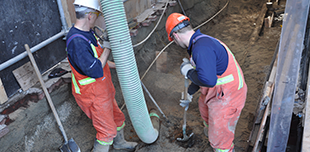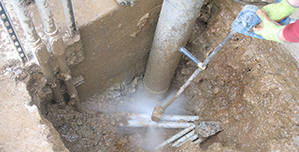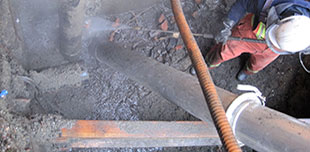After any significant storm, it is always a good time for spring cleaning to ensure that the catch basin is free of debris and accumulated dirt. More than just a preventative measure, normal cleanings can ensure that the catch basin is flowing freely, and working properly.
A storm drain, or catch basin, in every neighborhood provides proper drainage of excess water that accumulates after a storm, or from melting snow. Many of the catch basins all across British Columbia experience high flooding throughout the year. It is imperative to remove debris and sediment that has built up and accumulated in the catch basins. Any debris that is left on the surface grates or catch basins will eventually decompose. The rotting solids will make their way into the waterways and can significantly reduce the levels of dissolved oxygen which would increase levels of bacteria in the water.
Remove Harmful Solids
Alternatively, by utilizing vacuum pumps and other devices, the equipment can loosen away all compacted material and remove the solids from the basin. In some areas, this spring cleaning process should be performed frequently as a way to eliminate any blocking of the system which could cause neighborhoods to flood.
Routine basin maintenance is essential because debris, sediment, leaves, trash, chemicals and other harmful pollutants can so easily enter the storm drains. By removing the debris quickly, the removal process can eliminate the potential of the harmful pollutants that could make their way into the beautiful streams, rivers and lakes of British Columbia.
Ideally, it is highly recommended to create and implement an effective catch basin maintenance schedule to ensure that storm water structures and catch basins are flowing freely. To maintain an effective sump capacity, it is recommended that the basin be cleaned before they are half-full or when quickly filling up with dirt, leaves and other debris after the winter months. This can significantly reduce higher pollutant loads and harmful discharges to the area surface waters.








